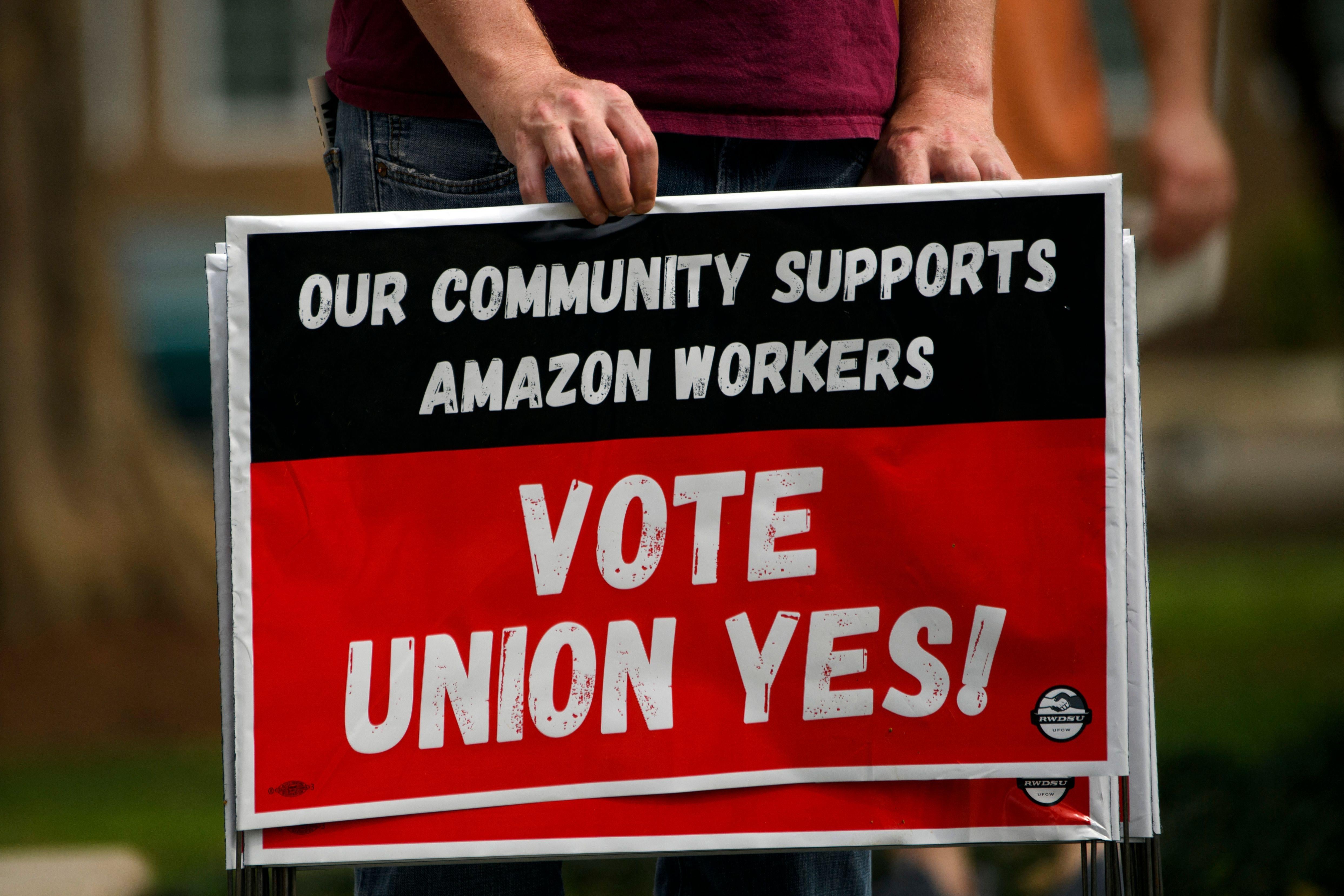Voting in the closely watched union election at Amazon’s facility in Bessemer, Alabama, ended on Monday, and the National Labor Relations Board began counting the ballots on Tuesday. The facility’s nearly 6,000 employees have been voting since February on whether to join the Retail, Wholesale and Department Store Union and become Amazon’s first unionized workplace. Yet it could take days or even weeks until we know the results. That’s because the NLRB’s counting process is slow and exacting. If you thought that presidential vote-counting can get complicated, this is something else.
As the New York Times reported, the process begins with a conference in which an NLRB official reads the names of every employee who submitted a ballot. Representatives from Amazon and the RWDSU check those names against their own employee rolls, and either side can contest a person’s eligibility—for instance, Reuters found that 19 people received ballots even though they’d already left the company, and at least two of them voted. Any contested ballots get set aside. Reuters further reports that just determining the eligibility of the voters likely won’t be completed until later this week.
After the contested ballots are removed from the pile, the NLRB starts counting the votes. The board counts and then recounts votes in 100-ballot batches. The amount of time this will take depends partly on how many people voted—if that number is in the thousands, it could take weeks. It only requires a simple majority for the union to be approved. If it turns out, though, that the number of contested ballots is larger than the margin of victory, then the NLRB will have to hold a hearing in which Amazon and the RWDSU argue over whether certain votes should or shouldn’t be counted. Once that portion of the process is finished, which could also take multiple days, only then will we finally have a result.
But the result at that point isn’t necessarily final. Either side can still file challenges to the NLRB about how the voting was facilitated, which could lead to throwing out the results and holding a new election. The union, for instance, could argue that Amazon improperly pressured employees to vote no. Amazon, on the other hand, could quibble with the fact that voting happened via mail, rather than in person.
The counting process is the homestretch for a union drive that’s involved months of high-profile lobbying from employees and fierce pushback from Amazon. The intensity of the dueling PR campaigns seemed to reach a boiling point over the last week as voting came to a close. This was in part because, according to Recode, Amazon CEO Jeff Bezos pressed company officials to respond more aggressively to criticisms of the company. It appears that this directive led to some perplexing behavior from Amazon-affiliated accounts on Twitter last week. Dave Clark, CEO of worldwide consumer at Amazon, notably decided to suggest that Sen. Bernie Sanders was less progressive than the company. On Friday, the @amazonnews account also tried to pick fights with Sanders, taunting him over Vermont’s $11.75 minimum wage, and with Sen. Elizabeth Warren, suggesting that she was trying to silence the company by pursuing antitrust legislation. The account’s combativeness was reportedly so unusual that it led security staff to flag the activity as suspicious and warn that @amazonnews might have been hacked.
